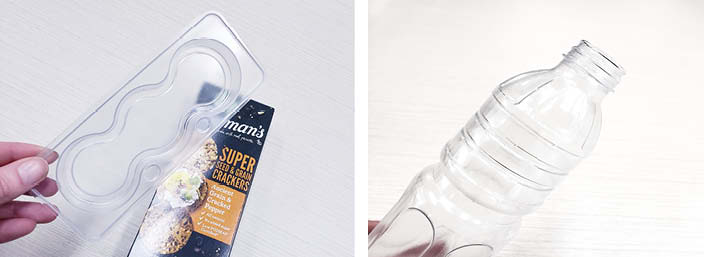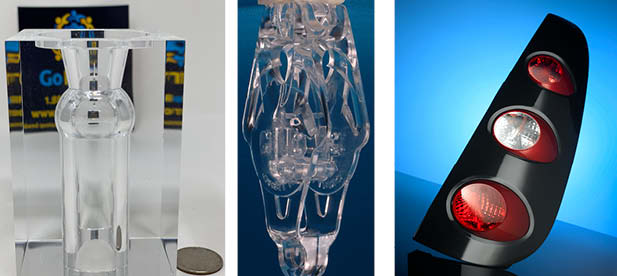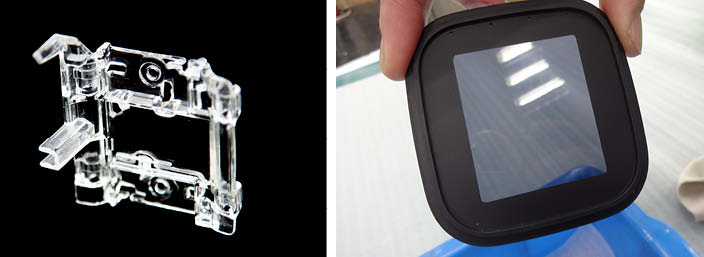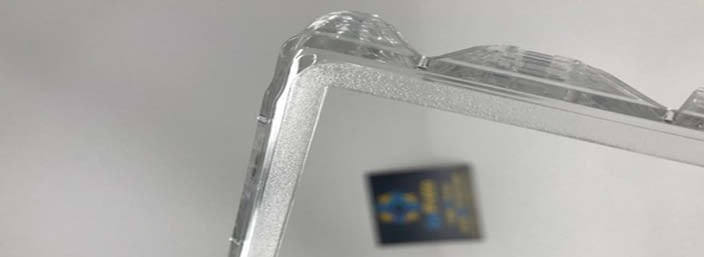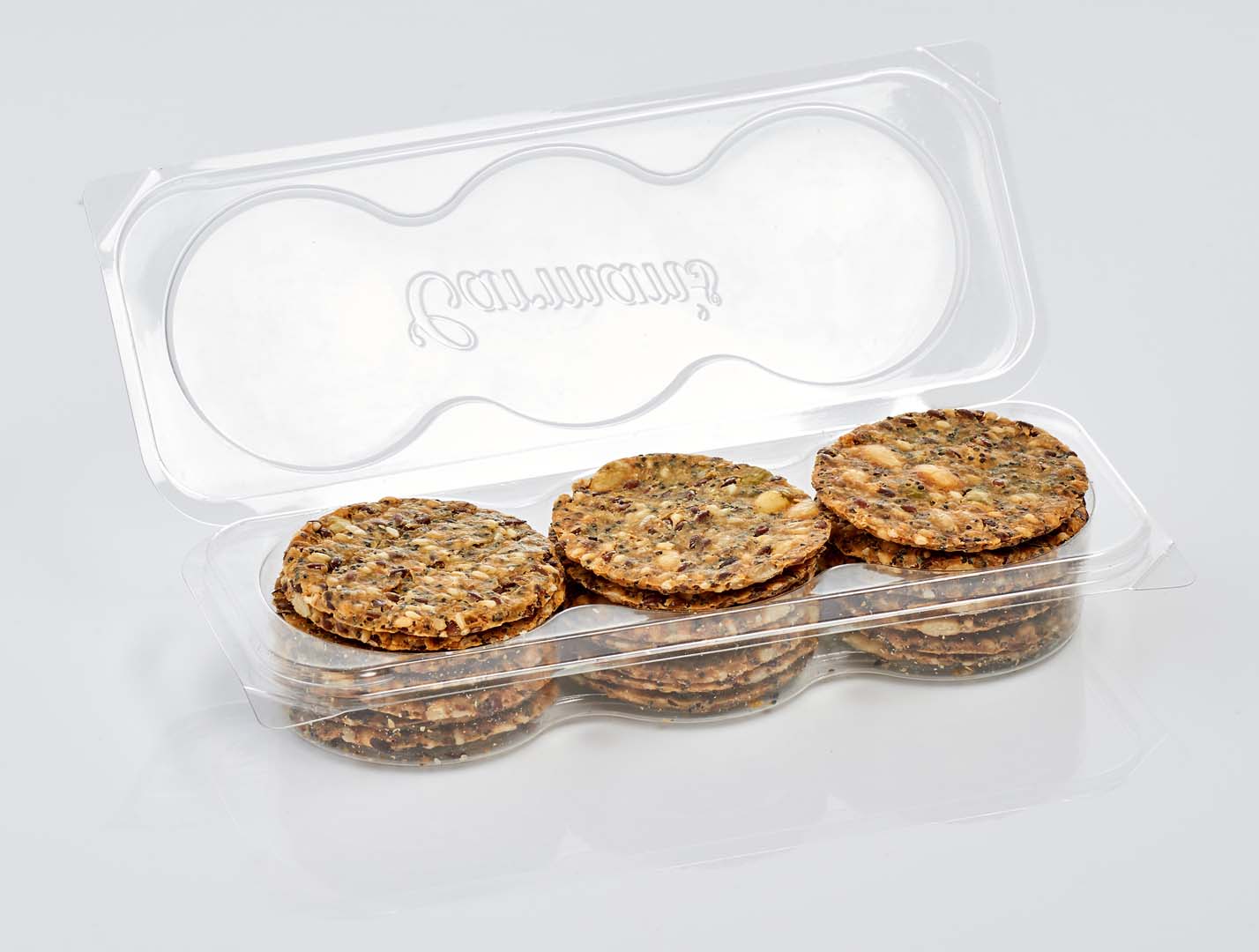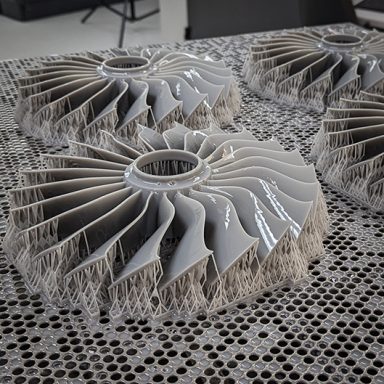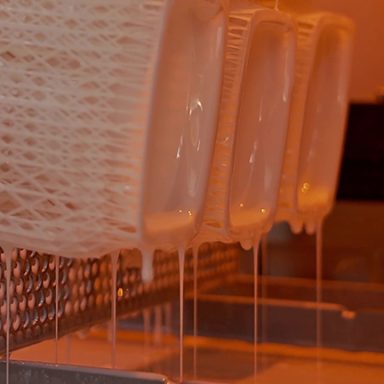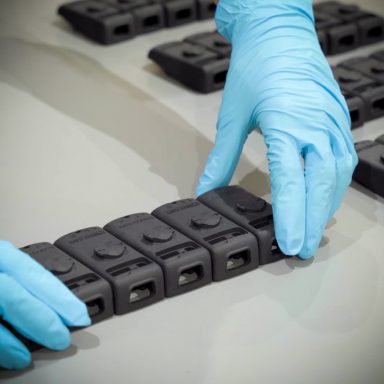Clear Prototype Parts
August 11, 2021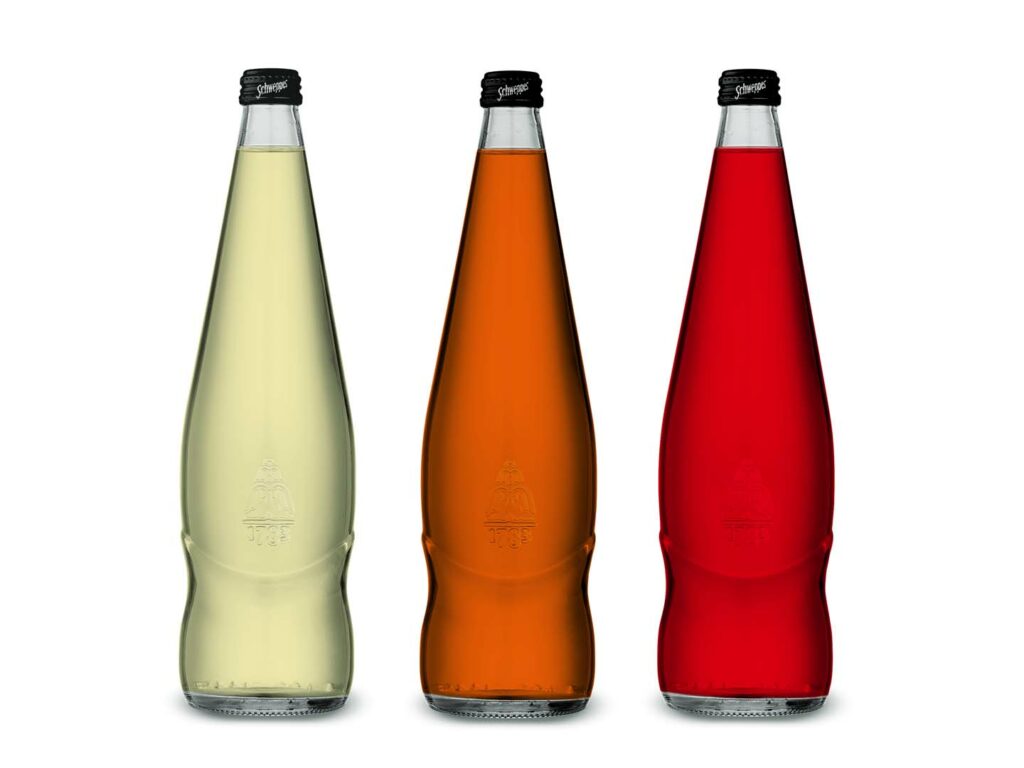
Many assemblies include clear plastic components. The clarity and function of a prototype part will have a direct bearing on the process option, material and level of finishing.

- Optically Clear – Parts with good optical clarity, transparent and unclouded. (May or may not have colour.)
- Clear – Clear at first glance, but not polished to the level of an optical finish.
- Translucent – Allows transmission of light, however diffuse transmission of light means objects lack crispness.
At Formero, we offer a combination of materials, methods and finishing options that allow customers to acquire the clear look they need.
Stereolithography (SLA) 3D printing
We operates a number of different SLA 3D printing materials in-house, including a high clarity SLA resin. This technology produces water clear parts quickly and cost effectively, but requires levels of post-process finishing and lacquering to enhance the clarity.
Speed and part complexity is a big advantage of 3D printing clear parts. However, printed SLA parts have limited functionality since the material is a thermosetting polymer resin.
Materials: Epoxy based.
Advantages: Very short lead times, excellent detail level.
Disadvantages: Fragile parts unsuitable for physically demanding applications, less suitable for high volumes.
Level of clarity: Clear (High polish & lacquering), Translucent.
Clear Parts with CNC Machining
Machining Acrylic or Polycarbonate materials provide ideal results. Although, acrylic is the most popular choice when trying to achieve a glass-like finish with a normal amount of polishing.
Machined parts are usually stronger than comparable 3D printed parts, but design complexity can be limited. CNC machining is also more expensive than 3D printing.
Materials: Acrylic or Polycarbonate.
Advantages: Excellent finish, true production materials.
Disadvantages: Less suitable for high volumes, design complexity limitations.
Level of clarity: Optically Clear, Clear.
Clear Parts with Vacuum Casting
Vacuum casting is a viable way of achieving transparent or translucent prototypes.
Vacuum casting uses silicone moulds instead of expensive metal tooling, and these moulds can produce around 20 copies.
Ideal for R&D, companies often seek out vacuum casting explicitly to make clear or tinted coloured parts. Vacuum casting (also known as urethane casting) is often used to make display prototypes, containers, housings or enclosures.
Materials: Polyurethanes that mimic acrylic, PC, etc.
Advantages: Exceptional surface finish, much cheaper than injection moulding, minimal post-processing
Disadvantages: Clarity depends on the finish of the pattern. PU materials have some limitations (not food or medical grade).
Level of clarity: Optically Clear, Clear, Translucent.
Clear Parts with Injection Moulding
Injection moulding is rarely used for one-off prototypes but is still a viable rapid prototyping or pre-production service when end-use production materials are required.
Materials: Thermoplastic clear resin like nylon, PET, and acrylic.
Advantages: Exceptional surface finish, end-use material.
Disadvantages: Tooling cost and lead time.
Level of clarity: Optically Clear, Clear, Translucent.

